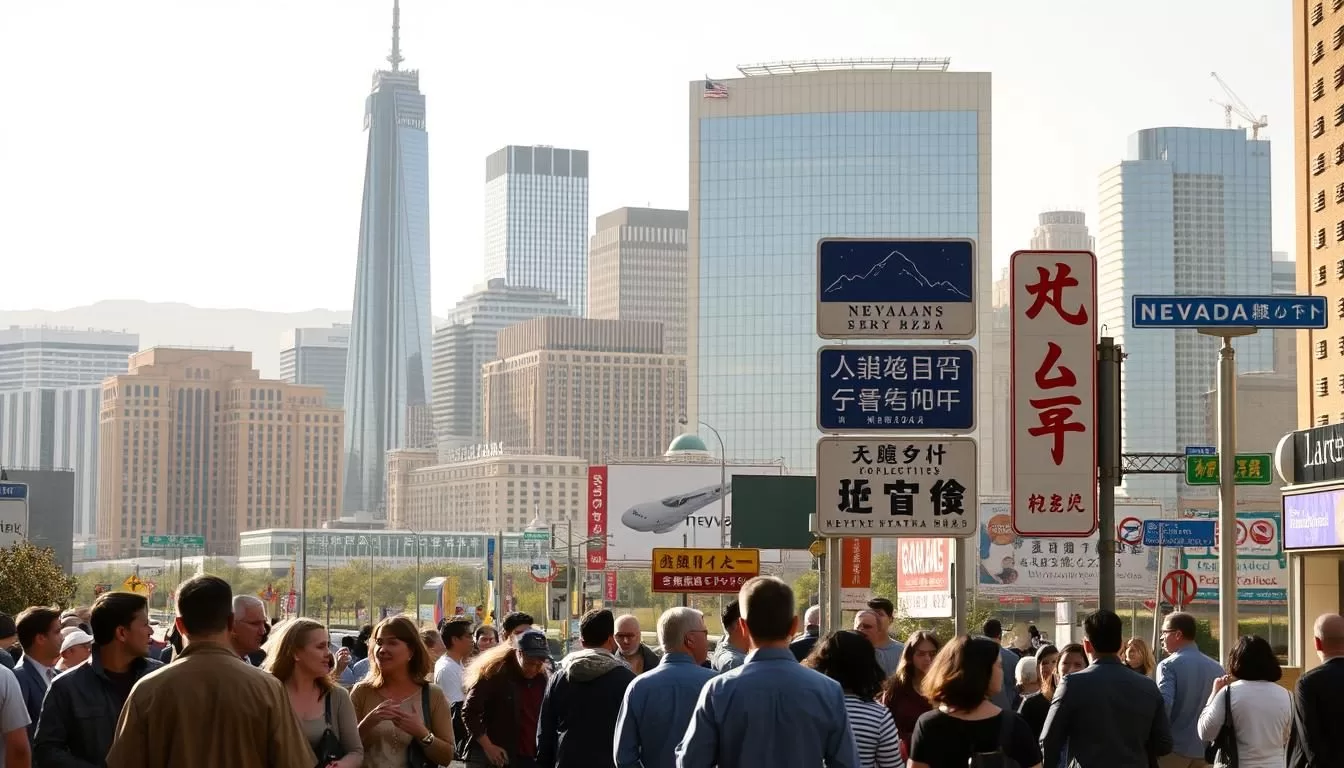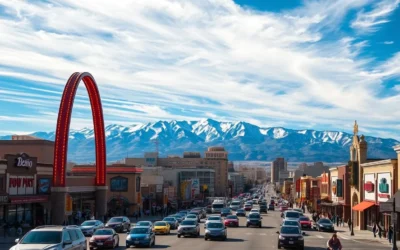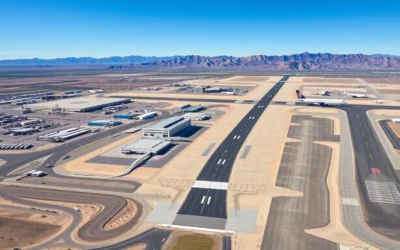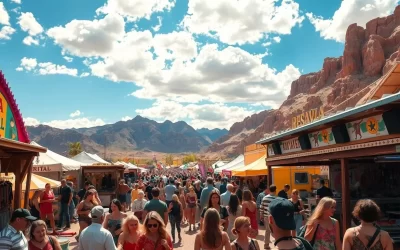As you explore the linguistic diversity of Nevada, you’ll discover a fascinating landscape shaped by its diverse population and rich cultural history.
Despite not having an official language at the state level, English serves as the de facto language for government, business, and education. The state’s communication dynamics are influenced by various waves of immigration and cultural influences.
Understanding the languages spoken in Nevada is crucial for effective communication across different communities. You’ll find that the state’s diversity is reflected in its language demographics, with Spanish being the most common non-English language spoken.
The Linguistic Landscape of Nevada
As you explore Nevada, you’ll discover a rich linguistic heritage that mirrors the state’s history and cultural diversity. The state’s language landscape is a complex blend of indigenous languages, the legacy of Spanish explorers, and the influence of various immigrant groups.
Nevada’s Language Status
Nevada is a melting pot of languages and cultures. Today, the state is home to a diverse population, with many people speaking more than one language. English is the predominant spoken language, but you can also hear Spanish, Chinese, and various Native American languages.
The table below illustrates the diversity of languages spoken in Nevada:
| Language | Speakers | Community |
|---|---|---|
| English | Majority | Statewide |
| Spanish | Significant minority | Urban areas |
| Chinese | Growing community | Las Vegas, Reno |
Historical Language Development in Nevada
Nevada’s linguistic history began thousands of years ago with the indigenous cultures of the Paiute, Shoshone, and Washoe tribes. The Spanish influence arrived with the explorers in the 18th century, evident in the state’s name, which means “snow-covered.” The 19th-century mining boom brought English-speaking settlers and immigrants from around the world, including Chinese laborers who worked on the railroads.
Throughout the 20th century, Nevada’s languages continued to evolve with each new wave of migration, creating the diverse linguistic tapestry you find in the state today. This diversity is a strength, enriching the community and city life in Nevada.
English Usage Across Nevada
As you explore the linguistic landscape of Nevada, you’ll notice the prevalence of English across the state. English serves as the de facto language for most public and private interactions.
De Facto Language Status
English is the primary language used in government services, education, and business. You will typically use English when interacting with government agencies, schools, and most businesses in Nevada.
Regional Variations
Nevada’s English dialects are influenced by Western American English, with regional variations. The communities in Las Vegas and Reno may exhibit different linguistic patterns compared to rural areas, reflecting their diverse populations and economic bases.
| Region | English Dialect Characteristics | Influencing Factors |
|---|---|---|
| Las Vegas | Diverse, with influences from various cultures | Tourism, gaming industries |
| Reno | Blend of urban and rural dialects | Technology, manufacturing, and outdoor recreation |
| Rural Areas | More conservative, with industry-specific terminology | Mining, ranching, and agriculture |
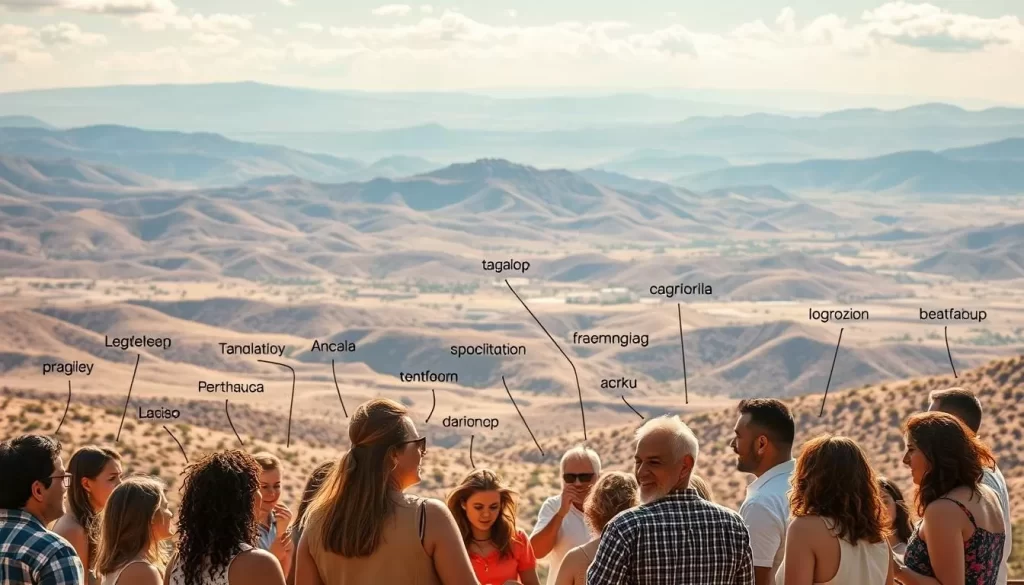
Spanish: Nevada’s Most Prominent Non-English Language

Nevada’s linguistic diversity is led by Spanish, which stands out as the most widely spoken non-English language. This is reflected in the significant presence of Spanish-speaking communities across the state.
Spanish-Speaking Communities in Nevada
Spanish-speaking communities are thriving in Nevada, particularly in urban areas like Las Vegas. The city’s cultural events, businesses, and community services often cater to Spanish speakers, creating a vibrant cultural landscape.
Las Vegas, being a major city, has extensive resources for Spanish speakers, including bilingual staff in hospitals, government offices, and major businesses. This support is crucial for the integration and participation of Spanish-speaking residents in various aspects of community life.
Spanish Language Services and Resources
In response to the large Spanish-speaking population, many Nevada government agencies, healthcare facilities, and businesses provide Spanish language services. This includes translated documents, Spanish-speaking staff, and interpreter services, ensuring that Spanish speakers have access to essential services.
The availability of these services not only improves access for Spanish speakers but also strengthens Nevada’s economy by enabling fuller participation of all residents in business, healthcare, and civic activities.
- Spanish language services have expanded significantly across Nevada.
- Many official documents and healthcare forms are translated into Spanish.
- Educational institutions offer Spanish language support services and bilingual programs.
Top Non-English Languages in Nevada
You will discover that Nevada’s cultural landscape is shaped by a range of non-English languages. The state’s linguistic diversity is a reflection of its cultural diversity and the various communities that call Nevada home.
Beyond English, several non-English languages are widely spoken in Nevada. The following sections will explore some of the top non-English languages in the state.
Tagalog and Filipino Community
The Filipino community in Nevada has a significant presence, with Tagalog being one of the prominent languages spoken. This community contributes to the state’s diversity through various cultural events and initiatives.
Chinese Language Speakers
Chinese language speakers are another significant group in Nevada, with a notable presence in urban areas like Las Vegas. The Chinese community enhances the state’s cultural landscape through cultural events and business initiatives.
Korean and Vietnamese Communities
The Korean and Vietnamese communities also have a considerable presence in Nevada. These communities contribute to the state’s linguistic and cultural diversity, with various cultural organizations and events.
Other Asian Languages
Nevada is also home to speakers of other Asian languages, including Amharic (3,915), Thai (3,348), and Japanese (2,445). The Thai-speaking community has established a notable presence in Las Vegas, enriching the city’s cultural landscape with Thai restaurants, markets, and cultural organizations. Japanese language use in Nevada reflects both historical immigration patterns and more recent connections through tourism and international business. These diverse language communities often collaborate on cultural events, business initiatives, and advocacy efforts. As a result, translation services for these languages are increasingly available in Nevada’s major urban centers, reflecting the growing recognition of the state’s linguistic diversity.
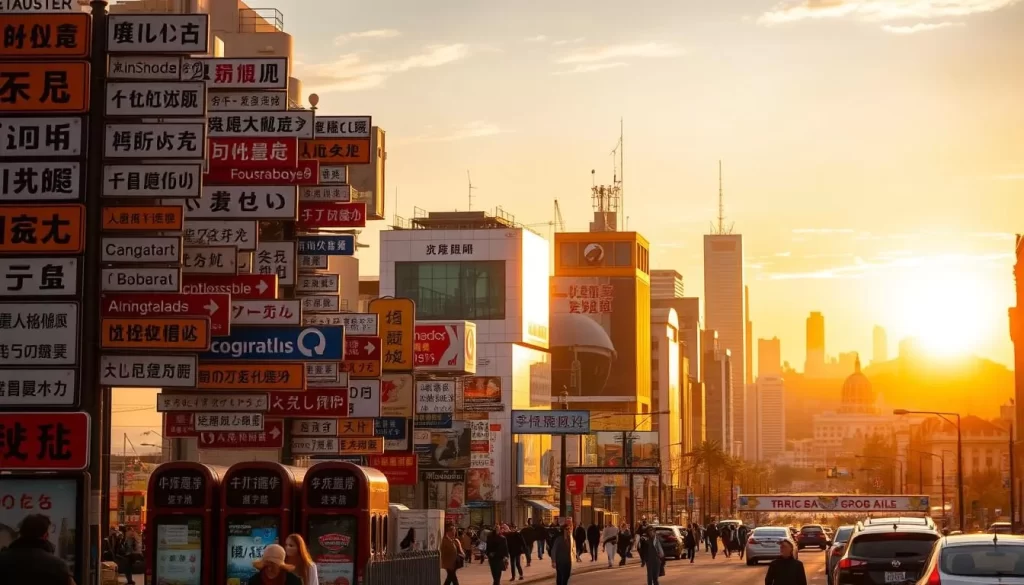
Indigenous Languages of Nevada
You can discover the unique cultural identity preserved through Nevada’s native languages. These languages are not just a means of communication; they embody the history, traditions, and values of the indigenous communities that have thrived in this region for centuries.
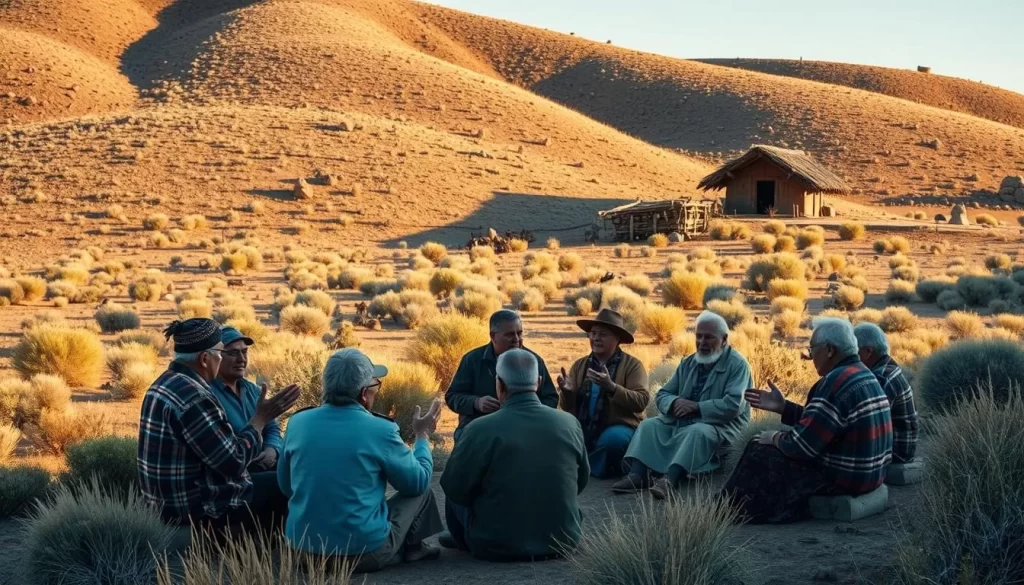
Native American Linguistic Heritage
Nevada’s indigenous languages are a vital part of the state’s cultural heritage. The Native American linguistic heritage is diverse, with various languages spoken across different reservations. These languages are crucial to understanding the cultural and historical context of the region.
Preservation Efforts for Indigenous Languages
Various preservation efforts are underway to document and revitalize Nevada’s indigenous languages. These initiatives include language classes on reservations, documentation projects, and collaboration with linguistic researchers. The University of Nevada has supported some of these initiatives, highlighting the importance of preserving the cultures and place within the community.
Some of the key preservation efforts include:
- Language revitalization programs on reservations, targeting both children and adults.
- Digital technology playing a crucial role in documentation, with audio and video recordings, and language learning apps.
- Collaboration between tribal communities, educational institutions, and researchers to create new language learning resources.
These efforts not only help maintain linguistic diversity but also strengthen cultural identity within Nevada’s indigenouscommunity.
Language Demographics and Population Trends
Nevada’s linguistic diversity is shaped by its history, economy, and immigration patterns. As you explore the state’s language demographics, you’ll notice that the population trends reveal a complex and evolving language profile.
Urban vs. Rural Language Distribution
The distribution of languages in Nevada varies significantly between urban and rural areas. Urban centers like Las Vegas and Reno tend to have a more diverse language landscape due to the presence of international communities and immigrants. In contrast, rural areas often have fewer languages spoken.
Language Changes Over Time
Analyzing data on language trends over time reveals that Nevada’s linguistic landscape has undergone significant transformations. The journey of language evolution in Nevada continues, driven by factors such as immigration and economic shifts. For instance, the table below illustrates the changes in language demographics over the past few decades.
| Language | 1980s | 1990s | 2000s |
|---|---|---|---|
| Spanish | 10% | 15% | 25% |
| Asian Languages | 5% | 8% | 12% |
| Other Languages | 3% | 5% | 8% |
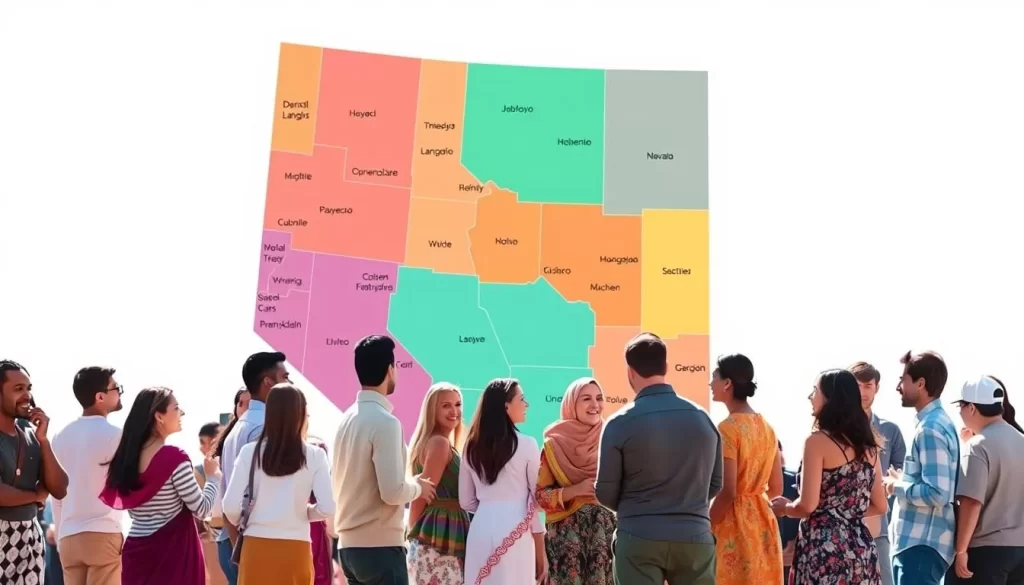
Language Services and Resources in Nevada

Language services in Nevada are designed to bridge the communication gap between different communities. As you navigate the state’s diverse linguistic landscape, you’ll find that various industries and businesses offer language support to cater to the needs of the population.
Government Language Access Services
The state of Nevada has implemented various services to ensure that government facilities are accessible to everyone, regardless of their language proficiency. You can expect to find translation services and multilingual staff in key government offices, making it easier for you to access public services.
Business and Healthcare Language Support
In Nevada, businesses and healthcare providers are increasingly offering language support services. Major hospitals provide interpreter services and translated materials, while the tourism industry, particularly in Las Vegas, employs multilingual staff to serve international visitors, enhancing your experience in the state.
Embracing Nevada’s Linguistic Diversity
Embracing linguistic diversity is crucial for Nevada’s continued growth and global connections. Nevada’s linguistic diversity represents a significant cultural strength, connecting the state to communities and markets worldwide. You can experience this diversity firsthand through various cultural events, such as Chinese New Year festivities and Hispanic Heritage Month celebrations, which take place throughout the state. As the state continues to evolve, its commitment to linguistic inclusion strengthens, fostering an environment where people from diverse language backgrounds can participate fully in community life and business opportunities.
The state’s multilingualism supports international tourism and global business connections, enhancing Nevada’s competitiveness in various industries. By embracing this diversity, Nevada creates a more inclusive environment for all.
The above is subject to change.
Check back often to TRAVEL.COM for the latest travel tips and deals.
